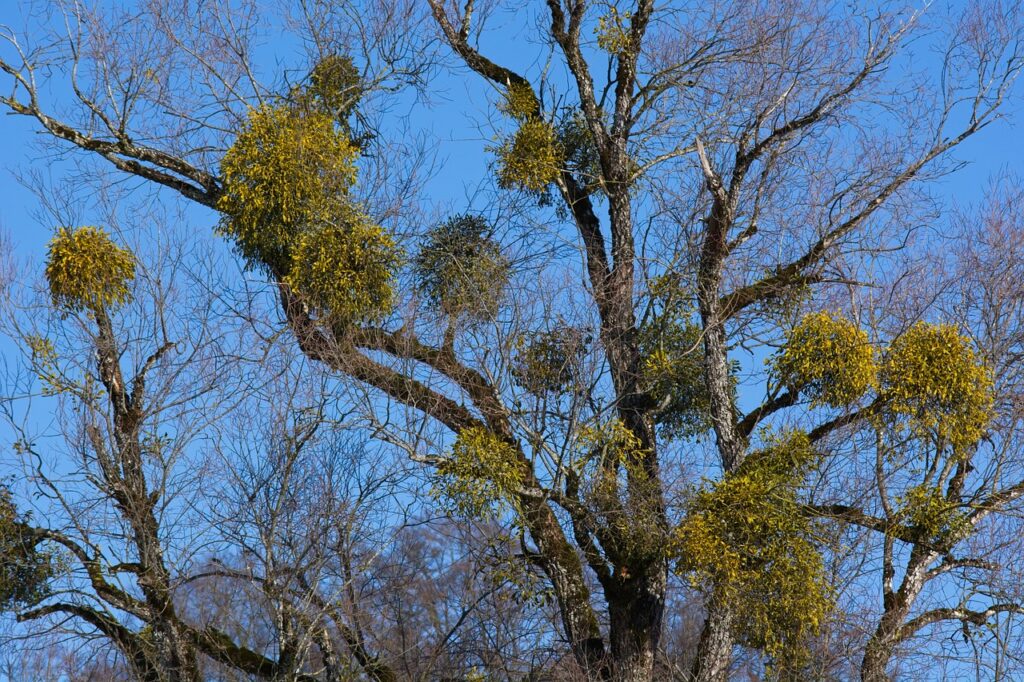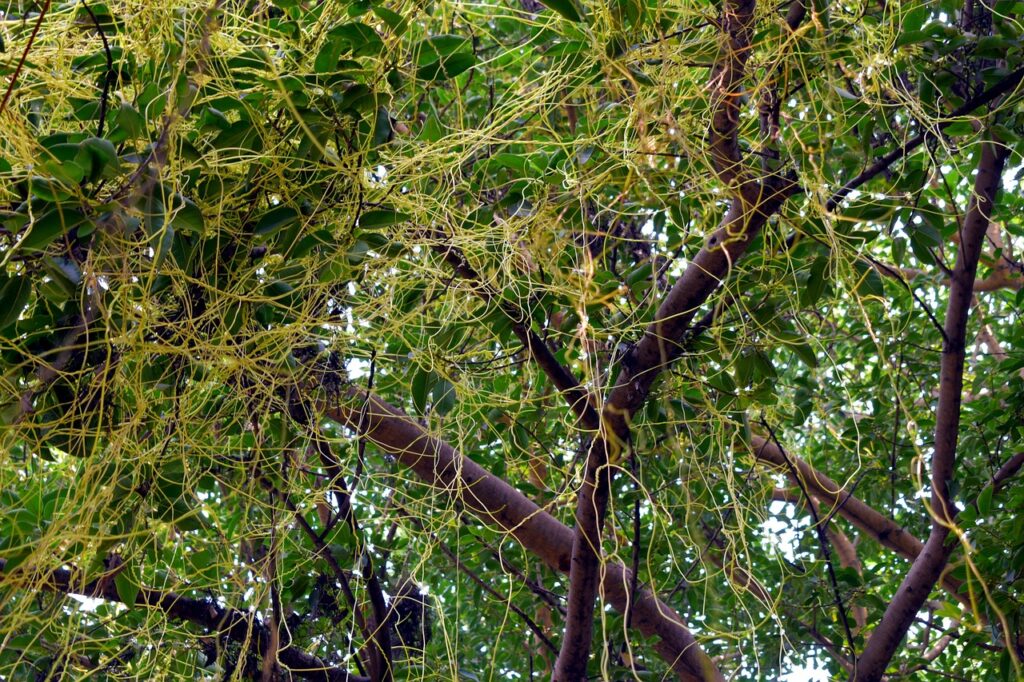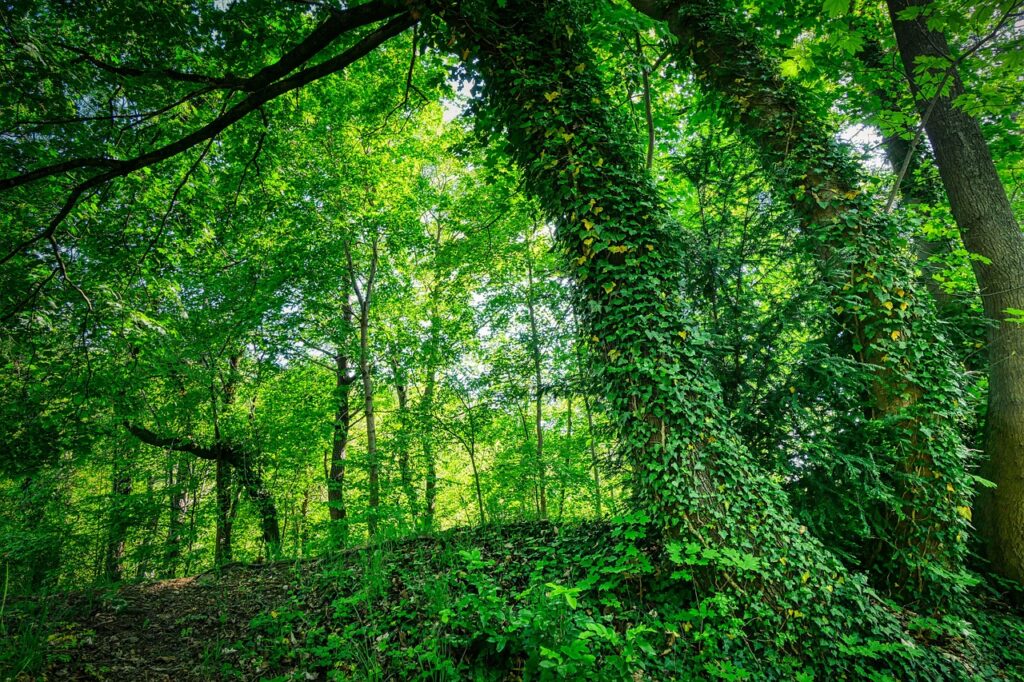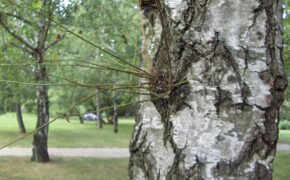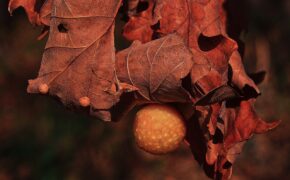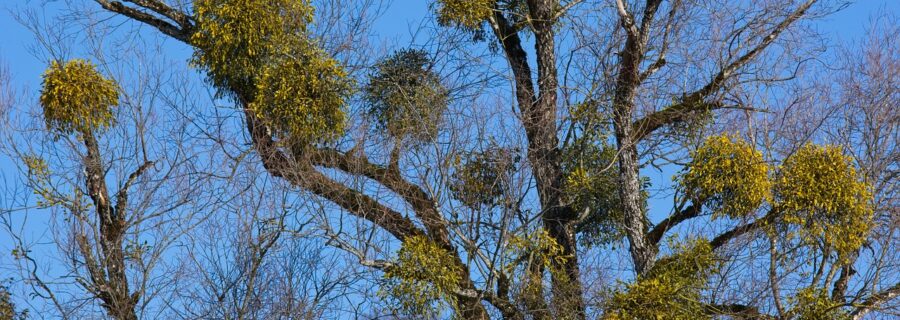
Get a quick no obligation quote It’s free and will only take a jiffy!
Parasitic Plants: Should I Remove These Unwanted Guests From my Tree?
Most plants get their energy through photosynthesis, but some get it by stealing it from other plants. These are called ‘parasitic plants’, and they sometimes make their homes in trees, feeding off their nutrients. Join us as we explore some of the most common parasitic plants, where they can be found, and what you should do if you find one living in your tree.
If you’ve ever noticed strange plants growing on your trees, they could be parasitic plants, using your trees as their ‘host’.
Parasitic plants gain the energy they need by stealing nutrients and water from their host plant. Some, known as hemiparasites, photosynthesise as well but also draw water and nutrition and water from their host, but others get their entire energy quota by sending roots called haustoria deep into the vascular tissue of the tree.
Are parasitic plants a risk to trees?
Parasitic plants can cause significant damage to trees if they are left to grow unattended. The plants draw off valuable nutrients from the tree, holding back its growth and leave it prone to disease, pests and the possibility of structural damage.
Most parasitic plants are unable to produce their own nutrients for survival, which is why they leech onto other plants such as trees. Lots of them will lack chlorophyll, a natural energy and food source that plants need to photosynthesise, which is one of the nutrients they’ll draw from the host plant.
The haustoria that the parasitic plant sends out form a connection between the parasite and the host. Some parasites grow within the host and only come out to flower, whilst others attach externally.
As well as the presence of the parasitic plant itself, typical signs that a tree might be affected include:
- Branch brooms: an unusual growth of twigs or branches coming from a single branch
- Bole swelling: a large mass growing from the trunk of a tree
- Tree cankers: dead sections of bark
If your tree is presenting any of these symptoms, do not hesitate to contact a qualified tree surgeon for advice as soon as possible.
What are common examples of parasitic plants?
Some of the most common parasitic plants that attach themselves to UK trees include:
Mistletoe
The ‘Christmas plant’, hemiparasitic mistletoe’s preferred hosts include apple, hawthorn and poplar, but it is also known to grow on other species.
Most mistletoe seeds are spread by birds, but others reach new hosts by exploding their seeds from one treetop to another, sometimes at speeds up to 90km per hour. The seeds are covered in a sticky substance that helps them stick to their new host.
Cuscuta
Cuscuta, also known as dodder, has no roots or leaves, but can be identified by its yellow or orange stems which have a stringy, hair-like appearance.
Cuscuta is one of the most aggressive parasites and will drain its host plant’s nutrients until it has killed it.
As Cuscuta cannot survive at all without a host, its seedlings must find a home within one at least 5-10 days before they run out of energy. They actively sense which plants in the vicinity would make the best hosts, and actively grow in their direction.
When left unattended, Cuscuta can spread quickly and cover entire canopies, severely weakening the tree and leaving it prone to other pests, parasites, and disease.
Ivy
Although not strictly parasitic, ivy is often considered a hemiparasite because it can climb and potentially damage trees.
It clings to tree trunks and can shade out the tree’s foliage, competing for light and potentially weakening the host tree over time.
Broomrape
These are root parasitic plants that can attach to the roots of trees and other plants.
While more commonly associated with herbaceous plants, certain species of broomrape can colonise the roots of woody plants, including trees.
European yellow mistletoe
This plant is similar to the more commonly known mistletoe. It attaches to host trees and draws water and nutrients from them.
Need help with a parasitic plant in your tree?
Parasite plants can cause a great deal of damage to trees, drawing off their nutrients and depleting their energy stores, causing disease and weakening their structure.
If you are concerned that your tree may be playing host to a parasitic plant, please don’t waste any time in getting in touch with the experts at TH Trees Ltd.
We’ll come along and assess the problem, and provide a tailored solution to deal with the parasitic plant so that your tree is no longer under threat. We’ll also assess the condition and health of your tree, and advise any action that needs to be taken to make sure it stands the best chance of survival.
Had a fallen tree in the early hours of Monday morning, called for quote and the team had it cleared on the same day. Really good communication when the lads were onsite and did a great job. Lots of pride in their work shown with the thorough clear up. Would thoroughly recommend.
Thank you Stuart for your kind review. We were glad to be able to help you with your fallen tree. If there's anything else you need in the future, please don't hesitate to get in touch.

